Triton, Not Pluto or Eris, Is The Kuiper Belt’s Largest World
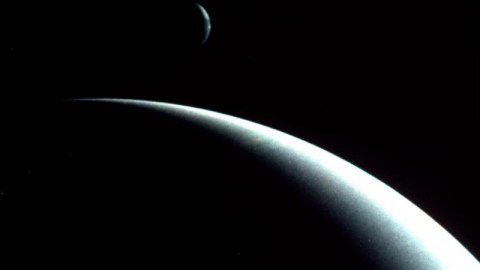
It may have been captured by Neptune since it formed, but Triton remains king of the Kuiper belt.
Our Solar System is arguably the most well-studied corner of the Universe, with humanity having mapped out the planets, moons, and other significant bodies in our vicinity. Closest to the Sun, we have the densest worlds: made out of the heaviest elements and too small to hold onto a gas giant envelope. Beyond that are the asteroids, coinciding with the Solar System’s original frost line. Farther out than those are the four gas giant worlds, each with their own system of moons and rings. And finally, beyond that, are the trans-Neptunian objects: the frozen, comet-like worlds and bodies that are the farthest ones in our Solar System we’ve ever detected.
But which world is the true King of the Kuiper belt, the innermost of the trans-Neptunian objects? It’s not Pluto, the one with the greatest radius, nor Eris, the one with the greatest mass. Instead, Triton — the largest moon of Neptune — has them both beat. Here’s the bizarre story of how.

At first glance, you might think this is crazy. Triton, after all, isn’t located in the Kuiper belt, but is one of Neptune’s moons. It isn’t just some random moon of Neptune, either; it’s by far the most prominent. It’s the largest of Neptune’s moons and one of the largest moons overall in the Solar System, with only Earth’s Moon, Saturn’s Titan, and the four Galilean moons of Jupiter surpassing it. Triton is the first satellite of Neptune ever discovered, having been spotted in October of 1846: just months after Neptune itself was first announced.
So if it’s an actual, literal moon of Neptune, how could it possibly be classified as a trans-Neptunian object? In astronomy — as opposed to some other fields — it isn’t merely what your properties are today or where you’re located now that matters. The history of how you formed and arrived at your current location are parts of the story that simply cannot be ignored.

Triton, being a large, prominent moon that orbits its home planet every 6 days, looks pretty normal on most accounts. Until, that is, you take a look at the bizarre and unnerving fact of how it orbits. All of the other large moons in the Solar System,
- orbit in the same direction as the planets revolve around the Sun,
- orbit in roughly the same plane that the planets orbit the Sun (the ecliptic plane),
- and have densities that are in line with the predicted densities for solid bodies that formed at their particular, current distance from the Sun.
All of the Solar System’s large moons have these properties, except for Triton. Instead, Triton orbits around Neptune in the opposite direction (clockwise) from how Neptune rotates on its axis and revolves around the Sun (counterclockwise), and is inclined to the ecliptic plane of the Solar System at an unusual angle of 130°. This retrograde orbital motion of Triton is the key to piecing together this mystery.

Moons that are in retrograde orbits could not have formed from the same part of the pre-solar nebula as the planets that they orbit; that’s not consistent with the rules of how planetary systems come to be. If it couldn’t have formed alongside Neptune — the way that most moons form with their gas giant parents — then Triton must be an “adopted” moon, meaning it must have been captured at some point in the distant past.
There are two other big clues about Triton that lead us to believe it must be captured:
- A large portion of the Neptunian system has been cleared outside of Triton; the next-nearest moon beyond it orbits more than 15 times as distant as Triton does.
- It has the wrong density, color, and atmosphere to be a primeval moon of Neptune.
Both of these are big deals.
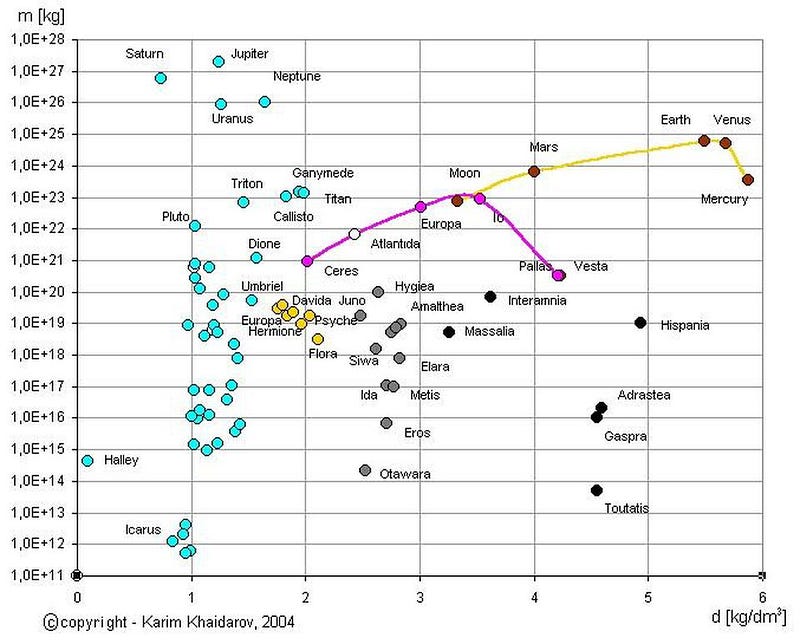
When we examine the moons of the other gas giants, we can see immediately why Triton is such an oddity among the large moons.
- Jupiter’s outermost large moon, Callisto, orbits at a mean distance from Jupiter of 1.9 million km. The next moon beyond that, Themisto, has a 7.4 million km distance: a 3.9-to-1 ratio.
- Saturn’s outermost big moon is Iapetus, orbiting at 3.6 million km. But Kiviuq, the next outer moon, orbits at 11.3 million km: a 3.2-to-1 ratio.
- Uranus’ outermost large moon is Oberon, with a mean orbital distance of 583,520 km. Beyond that, the next moon is Francisco, at 4.3 million km: a 7.3-to-1 ratio.
But Neptune is really weird. Not only does Triton have a mean orbital distance of just 355,000 km, but the next moon out, Nereid, orbits at 5.5 million km out (that 15.5-to-1 ratio), and the next one beyond that is a whopping 16 million km out! It’s almost like Triton’s presence cleared out the vast majority of Neptune’s outer moons, making Neptune unique among the gas giants.
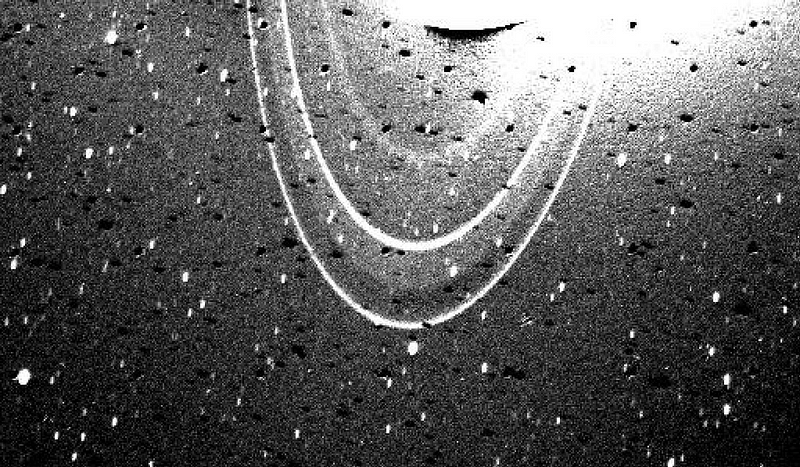
Triton’s density is also all wrong with what we’d expect its physical properties like density, color, and atmosphere to be based on how we know objects form in the Solar System. Instead, Triton matches much better, based on these and other physical properties, with many of the Kuiper belt objects we see today. In particular, it has a frozen ice crust, a surface primarily composed of solid nitrogen, a mantle made of largely water-ice, and a large, solid core that appears to be a mix of rock and metals.
Its composition and overall color looks a lot like Pluto’s does, in fact. Here’s what Triton looked like from the photomosaic Voyager 2 took of it when it flew by back in 1989.
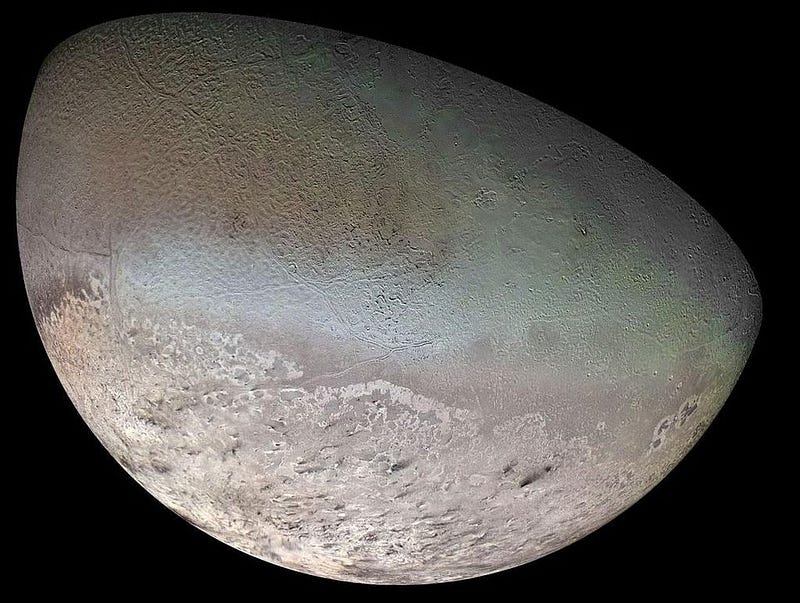
Compare that with the photomosaic we took of Pluto, back in 2015, when New Horizons flew by it.
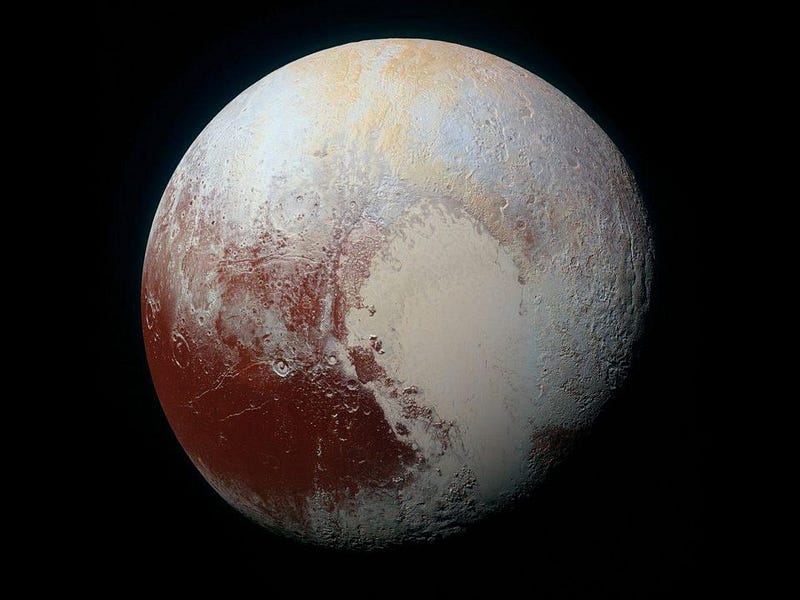
It’s extremely similar, isn’t it? Triton, in its current location around Neptune, is a fascinating world in its own right. It has a geologically young surface, with few impact craters, much like Pluto, indicating that it’s an active world that resurfaces itself over time. We know it has geysers that erupt, sending gaseous nitrogen up and above the surface, making up most of Triton’s thin, Pluto-like atmosphere.
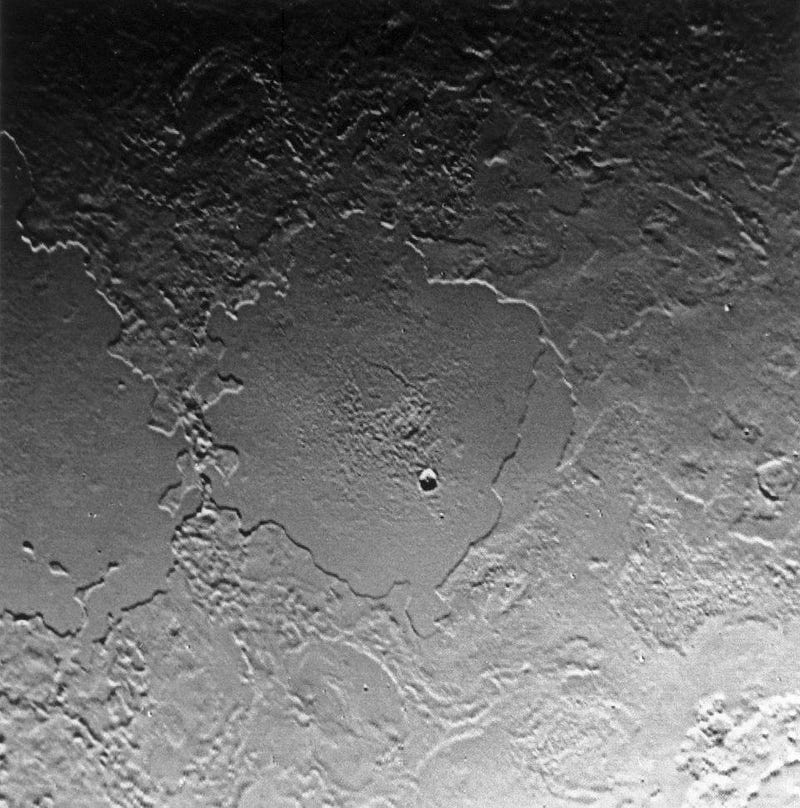
Triton’s crust is 55% nitrogen ice, with other ices (like water ice and frozen carbon dioxide) mixed in: the same ratios as Pluto. Triton has a reddish color to it, thought to be from methane ice converted into tholins from ultraviolet radiation: again similar to Pluto. It even has black, smoke-emitting cryovolcanoes on its surface: evidence that perhaps a subsurface liquid ocean can force its way up through the crust. Triton, though cold and frozen, is an active world.

So how did it get to be where it is today? Like many objects that we know of originating in the Kuiper belt, Triton probably had an orbit that caused it to make a number of close passes to Neptune. When this happens today, Neptune’s gravity changes the object’s orbit in a roughly random direction. But if this happened in the early days of the Solar System, Neptune likely had a large set of masses around it, in the form of either moons, rings, or a disk.
When Triton came in, it was probably a combination of gravitational interactions, a drag force, maybe a collision, and perhaps the ejection of a binary companion that allowed Triton to become captured and circularized. Triton was likely born in the Kuiper belt, captured early on, and the process of its capture ejected most of the outer masses and moons from the Neptunian system.
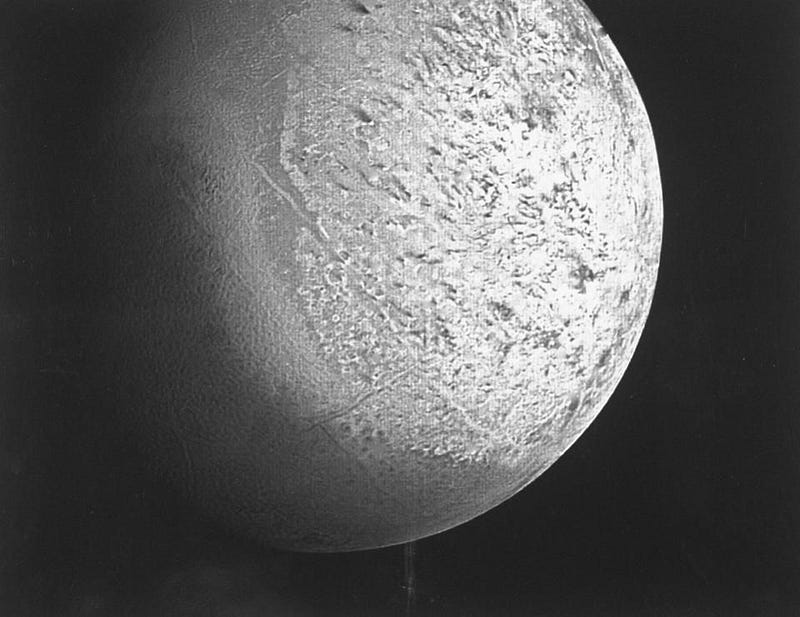
The result, today, is that the largest and most massive body ever to form in the Kuiper belt — 20% larger than Pluto; 29% more massive than Eris — is now Neptune’s largest moon: Triton. Today, Triton makes up 99.5% of the mass orbiting Neptune, an enormous departure from all the other giant planet systems we know of. The only explanation for its properties, especially its bizarre and unique orbit, is that Triton is a captured Kuiper belt object.
We often talk about icy moons with subsurface oceans as candidate worlds for life. We imagine large, distant, icy bodies as planets or dwarf planets in their own right. Triton was born not as a moon of Neptune, but as the largest and most massive Kuiper belt object to survive. You don’t cease to exist when you move locations, and neither did Triton. It’s the original King of the Kuiper belt, and its true origin story is a cosmic mystery that deserves to be solved.
Ethan Siegel is the author of Beyond the Galaxy and Treknology. You can pre-order his third book, currently in development: the Encyclopaedia Cosmologica.





